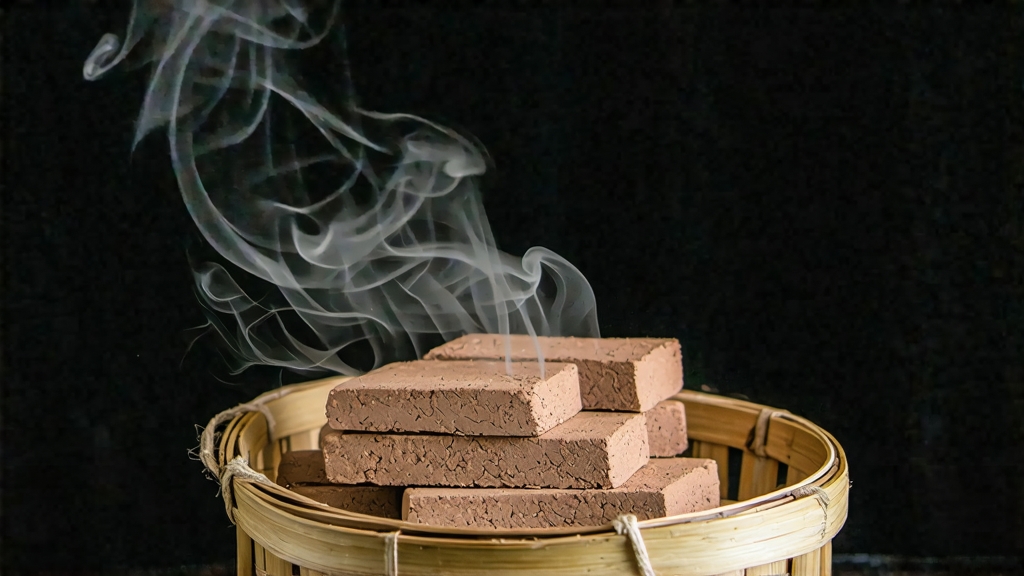
Tucked away in the subtropical mountains of southern China, Liupao (literally “Six Forts”) tea has spent four centuries quietly perfecting the art of post-fermentation. While Pu-erh grabs the international spotlight, Liupao remains the connoisseur’s clandestine pleasure—an inky liquor that smells of damp earth, rainforest bark, and the faint sweetness of betel nut. To understand Liupao is to listen to a story of war horses, river caravans, bamboo baskets, and the invisible microbial guilds that turn coarse subtropical leaves into velvet darkness.
-
From Battleground to Brand
The name first appears in 1640 county annals: six Ming-dynasty garrisons (“forts”) guarded the mountain pass between Guangxi and Guangdong. Soldiers traded compressed tea bricks for salt, opium, and horse fodder; the pressed leaf traveled better than coin. By the Qing era, Liupao had become one of the “Three Famous Black Teas of the Lingnan Caravan,” sailing down the Xun River to Guangzhou and on to Hong Kong, Macau, and the Malay archipelago. Malayan tin miners swore the tea cured beriberi; dockworkers used it to settle dysentery. Thus a frontier ration morphed into a diaspora tonic, and Wuzhou city—still the only legally protected origin—became the unofficial capital of southern dark tea. -
Leaves, Picking, and the Subtle Art of “Shai Qing”
Liupao is made from a local large-leaf variety—Camellia sinensis var. assamica cv. Guangxi—growing between 200–600 m on red lateritic soils. The harvest window is mercilessly short: two weeks before and after Qingming, when the leaves are still purple-veined and waxy. Standard of identity demands one bud with three or four leaves; anything younger lacks the polyphenols needed for later microbial drama. After picking, the leaves are spread on bamboo mats under full subtropical sun for “shai qing,” a light withering that oxidizes roughly 15 % of the catechins and sets up the signature betel-nut precursor compounds. -
Pile, Damp, and Wait: The Wet-Fermentation Chamber
Here Liupao diverges from Pu-erh. Instead of a long dry-aging road, Liupao walks a wetter, hotter, faster path. The withered leaves are pan-fired at 280 °C for ninety seconds—just enough to kill surface enzymes—then rolled for 25 minutes to rupture 70 % of the cells. Next comes “wo dui,” the wet-pile: leaves are stacked 70 cm high on perforated bamboo platforms, sprayed with mountain spring water (pH 6.2, rich in iron), and covered with jute sacks. Internal temperature climbs to 55 °C within 36 hours; humidity hovers at 85 %. A consortium of Aspergillus niger, Blastobotrys adeninivorans, and a native yeast dubbed Wuzhou-1 now takes the stage. Over 10–14 days the pile is turned five times; leaf color shifts from olive to umber, and the aroma moves from cut grass to wet bark and rising dough. A master “dui zi shi” (pile master) decides the finish by listening: when the rustle of turning leaves sounds like heavy silk, fermentation stops. -
Steam, Basket, and Mountain Air: The Bamboo Compression
Unlike Pu-erh stone molds, Liupao is shaped in woven bamboo baskets called long. A 50 kg batch is steamed for 90 seconds, then tamped into a 40 cm-tall cylinder lined with fresh bamboo skin. The bamboo imparts a green-coconut note and regulates moisture: the tea breathes but never desiccates. Each basket is lashed with rattan hoops and left in an open corridor where mountain fog rolls through day and night. Here secondary fermentation begins; yeasts slowly convert the remaining sugars, softening tannins and deepening the ruby-black color. After 45 days the baskets are unmolded, yielding a 35 cm “tea column” striated with bamboo leaf impressions—Liupao’s visual fingerprint. -
Aging: Time Meets Terroir
The columns are stacked in dim, cross-ventilated warehouses built on granite slabs. Ideal conditions are 24–28 °C